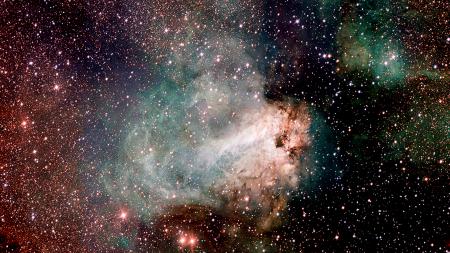
The reduction of stars visible to the naked eye is associated with an annual increase of 9.6% in the brightness of the night sky caused by light pollution and, in a matter of 18 years, “it will go from seeing 250 stars to only about 100” warned a study published this Friday in the journal Science.
Volunteers from all over the world participated in the research and submitted a total of 51,351 observations between 2011 and 2022. through the Globe at Night citizen science platform, a US National Science Foundation (NSF) NOIRLab program.
The results confirmed the “rapid growth” of the problem of light pollution, reported the Spanish scientific news portal SINC.
“This is an extraordinarily serious problem for amateur astronomers, because most people live in fairly polluted areas, and the situation is rapidly getting worse. Celestial bodies that are faint or hard to see today are likely to soon disappear completely from the sky.” sight,” lead author Christopher Kyba of the German Ruhr University Bochum told SINC.
Before I tell you what we did, I want you to understand why this is important. Skyglow is a visible symbol of our failure to transition to a sustainable society.
In addition, if skyglow is growing, then all of the ecological impacts of #LightPollution are probably too. (2/) pic.twitter.com/KSatLMnEIK
— Christopher Kyba @skyglowberlin@vis.social (@skyglowberlin) January 19, 2023
Kyba clarified that the results they obtained “cannot be generalized to professional astronomers” because their observatories are located further away from where the participants took part.
The change in the visibility of these, detected by the ‘citizen scientists’is equivalent to an annual increase of 9.6% in the brightness of the sky, a “faster” rate than what the satellites indicate, the portal added.
During the research they asked the volunteers to compare star maps of the night sky of various levels of light pollution with what they could see with their own eyes through the online platform.
According to the results, the brightness of the night sky increased between 7 and 10% per year due to artificial light, which is equivalent to doubling in less than eight years.
This increase is “much higher than the estimates of the evolution of artificial light emissions (approximately 2% per year) recorded by satellites,” the portal specified.
Participants use the GaN webapp (available in dozens of languages!) to also say where they were, the date and time of the observation, and sky conditions. (4/) pic.twitter.com/vApvCaDjoV
— Christopher Kyba @skyglowberlin@vis.social (@skyglowberlin) January 19, 2023
From space, these spacecraft can measure global sky brightness with limited resolution and sensitivity, and are often “blind” to the wavelengths of light produced by the LED lights that have dominated lighting for the past decade. they explained.
The kind of light pollution called “skyglow” it is responsible for the visible brightness of the night sky and the decrease in our ability to see the stars, specified SINC.
The researcher also stressed that the solution to light pollution has been known for many years: “Illuminate only the area that is needed, only for the required time, using the amount of light necessary and avoiding the use of lights that have ultraviolet radiation and trying to minimize blue light emissions.
“Our collective failure stems from the fact that many or most people who install lights don’t follow these good design principles,” he said, explaining that people often have the idea that more light will improve visibility, but “it’s not certain”.
“Visibility depends on the same design principles that minimize light pollution,” concluded Kyba and invited “continue collaborating” with the project that is still underway with versions in English, Spanish and Catalan.


















